Introduction to top 50 herb farming tips: Herbs are one of the most popular edible plants and easy to grow plants. Despite your limited gardening experience, you can still grow these fragrant and tasty plants. Growing herbs can be very lucrative and fun. It’s really easy too. Herbs are in high demand and growing daily because of their medicinal and health benefits ranging from alternative health professionals to aromatherapy and more.
Herb farming is a lucrative business that can generate huge profits if handled carefully. Almost any herb can be profitable if you have the right growth conditions, knowledge, and a good niche market. Popular herbs that are easy to care for are the best herbs to grow for profit because they require less labor and provide more marketing opportunities. As a beginner, it makes sense that you start your herbal farming business with the famous culinary herbs, as they have wide appeal and are known to be the most profitable. Some of the herb garden tips and tricks can be given below;
Top 50 herb farming tips
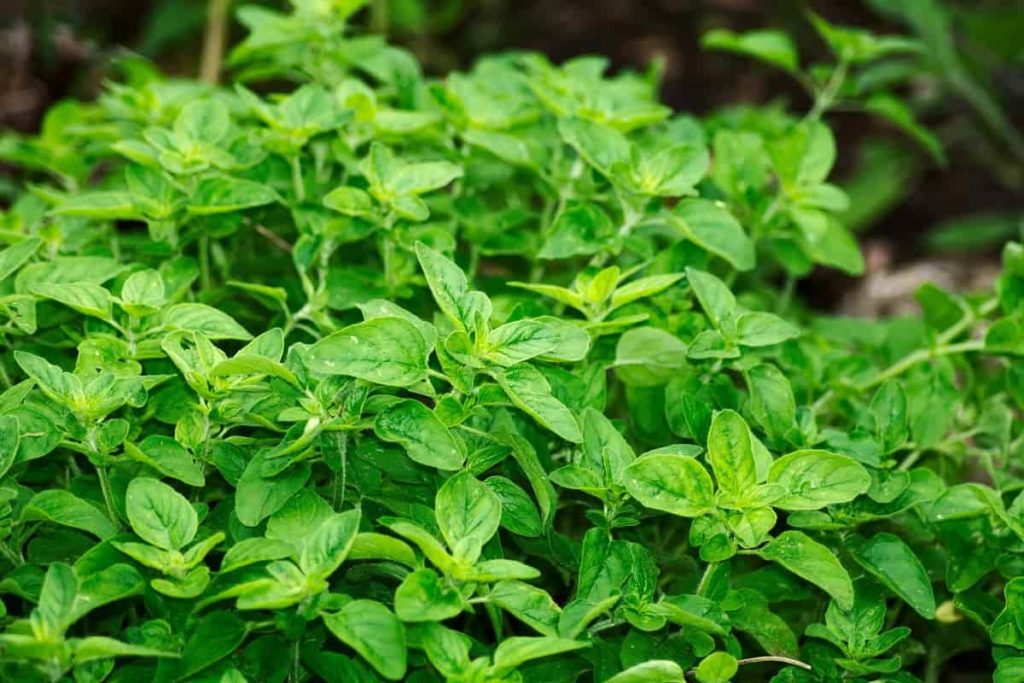
Tips to select a location for growing your herbs
- Herbs need the sun. Most herbs require at least 6 hours of sun exposure daily. Indoors, there is very little light, especially in winter. So, make sure you keep your herbs in a sunny place, preferably in a south-facing window. Find grow lamps in your local garden center or online.
- Location – Most herbs prefer full sun, so choose an outdoor area that has at least six to eight hours of direct sunlight daily. The morning sun with the afternoon shade is ideal for growing herbs on summer days.
- Proper drainage – When gardening with herbs, avoid planting in wet, moist soil that has poor percolation. Too much water the plants inhibits proper growth and create ideal conditions for fungal diseases. Amend the soil with fertilizers and organic matter to help improve drainage.
When and where to grow herbs
- Herbs grow well in full sun and light, well-drained, moisture-retaining, fertile soil with plenty of organic matter.
- Sow seeds that rush toward seeds, Coriander, and Dill, for example, to help keep the herb garden productive on a fortnightly basis during spring and summer.
- Choose from different varieties with different ripening times, where available. Keep a few containers close to home for easy picking. Keep some large containers with strong growing herbs like mint and sage. Use new or used growing bags especially where space is limited.
- Start early spring by sowing herbs under the cloches and frame. Plant a few trays in a greenhouse, conservatory, or sunny window and get ready to plant when the soil warms up.
Different types of herbs to try
Herbs can be easily grown in vegetable gardens, raised beds, or containers. There are different types of herbs, these include;
- Annuals – Basil, Coriander, and Dill.
- Biennials – Caraway, Chervil, and Parsley
- Perennials – Chives, Fennel, Borage, Marjoram, Mint, Sage, Tarragon, and Thyme.
In case if you miss this: Herb Gardening For Beginners – How To Start
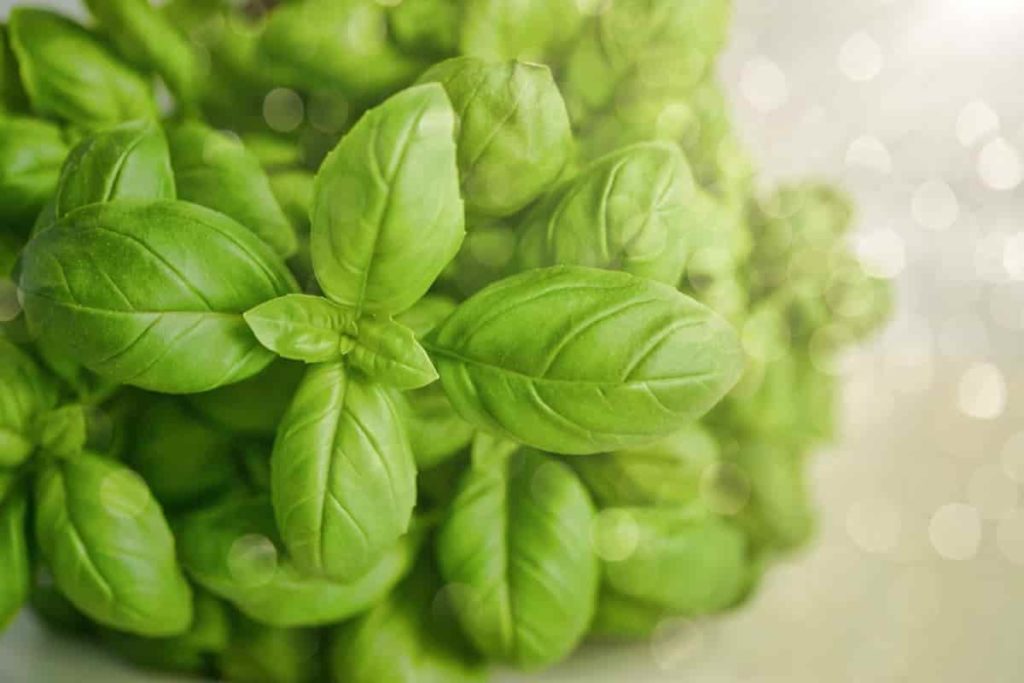
Tips for selecting herbs
- Basil – Basil is one of the favorite plants to grow and eat. When it’s in season, it’s hard not to want to include it in every dish. With so many types of basil, the creative uses are almost endless. Basil is an annual plant that grows well in container herb species and is often used in Thai and Italian recipes. It grows well in bright light and moist soil.
- Rosemary – A hardy plant that makes a wonderful addition to the landscape. Rosemary is a perennial and will serve as a perennial in most areas.
- Thyme – Thyme is grown in well-drained soil on a sunny spot. It makes a beautiful ground cover in the yard if allowed to go wild, and works great when left alone.
- Bay – Bay is a type of perennial herb that requires light-shaded and well-drained soil. Bay herbs grow well in pots and are famous for their leaves which are used for various purposes.
- Anise – Anise is an annual herbaceous plant whose leaves and seeds taste like licorice, which means a sunny place and well-drained soil.
- Lemon balm – Lemon balm is a hardy perennial plant that grows in garden areas with partial shade and moist soil.
- Borage – Borage is also an annual variety that performs well in sunny places and prefers dry soil. Its flowers and leaves taste like cucumber which is good to drink.
- Oregano – Plant in well-drained soil in a sunny or partially sunny area. Apply Oregano to light, well-drained soil. Oregano does well in partial sunshine, but when the sun shines all day, the flavor intensifies. Don’t give oregano too much water.
- Chives – Chives can easily grow from seeds, bulbs, or plant propagation. Plant on a sunny spot and irrigate at least once a week in hot, dry weather.
- Garlic – Garlic is one of the most widely grown herbs in the world. Garlic grows in fertile, well-drained loam soil, but grows satisfactorily in any soil that grows onions. Heavy clay soils should be avoided. Different varieties differ in the quality of their storage. It is grown in early fall or early spring.
- Lavender – Plant in well-drained soil on a sunny spot. In addition, organic matter-rich alkaline soils can stimulate higher plant oil production, enhancing the aroma of lavender plants.
- Mint – Mint is best in moist, moist places with well-drained soil, but also in a place that is in full sun or partial shade. The plant supports fertile soil rich in fertilizers. Mint is a strong perennial that grows in light soil with good drainage. Plant in partial shade and water several times a week in hot, dry weather.
In case if you miss this: Biofertilizers In Agriculture, Types, Advantages
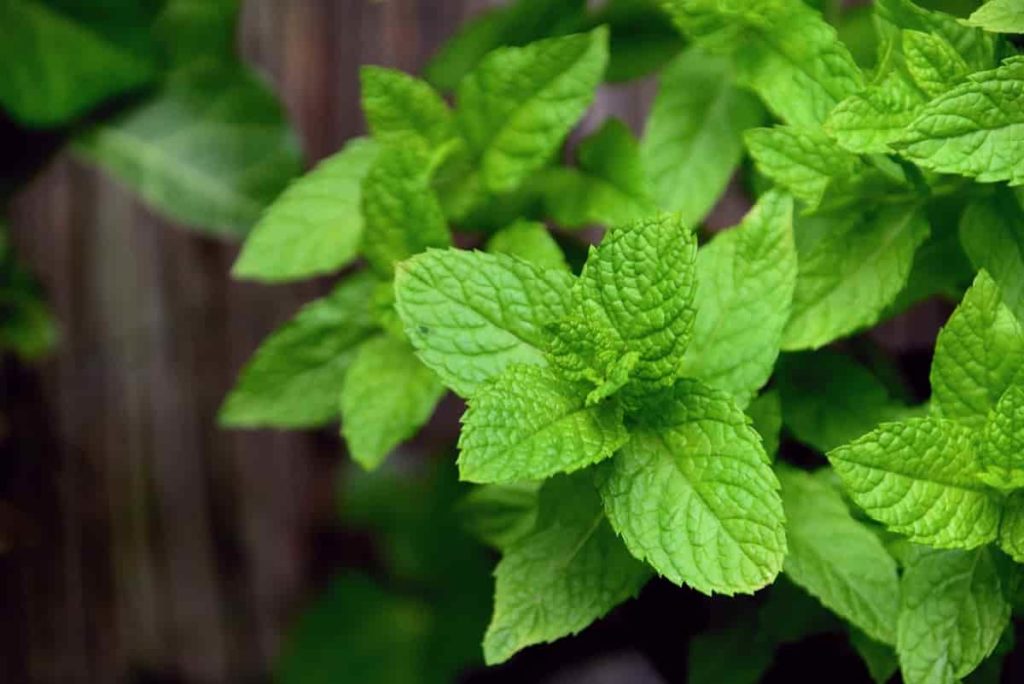
Tips for using quality potting soil
- For growing herbs in containers, buying quality potting soil is one of the secrets of growing herbs. Good drainage is essential for healthy herbs. Choose a planter with large drainage holes. The coir liner or coffee filter works perfectly to keep the soil inside the pot.
- If this is your first experience of container gardening with herbs, you can be more successful by buying plants from your local nursery instead of planting with seeds. Growing plants in a container’s microclimate require strict adherence to soil moisture levels and sunlight requirements.
Tips for selecting different types of herb farming
- Some herbs are easy to start with from seed, but others take a long time to grow. Buy slow-growing plants in the nursery or divide existing plants. In some cases, you can grow new plants with cuttings. Herbs should be carefully cared for at an early stage to avoid any adverse growth conditions. There are three different types of herb farming.
- From the seed – Before sowing any herb, whether it is in a seed starting tray or directly in the garden, read the seed packet, which will give you important information. Basil, Borage, Calendula, Chervil, Cilantro, Dill, Parsley, and, Sage are examples of herbs that are easy to grow from seed. Starting production by sowing seeds is one of the traditional methods and is said to be the most effective. Here, the quality of the seeds you sow determines the growth rate of your herb. And also, that the after-sowing process will result in a healthy plant even though the process is a bit complex.
- From Division – Perennial herbs can be easily divided. Generally, use a garden fork to dig up the plant’s root system and either pull the roots by hand or cut large parts of the plant roots into several pieces and place them elsewhere in the garden. If the division is to be used outside, the best time to distribute is in the fall, when they have been winding for years. When distributed and replanted in the fall, the plants grow faster. Bee Balm, Chives, Garlic chives, Lovage, Marjoram, Oregano, Thyme are easily grown perennial herbs that are growing from the division.
- From Cutting – Proper herb stem cuttings should be taken in spring or summer when the plants are healthy and thrive. Good choice for growing herbs from cutting is Lavender, Mint, Oregano, Sage.
In case if you miss this: Small Scale Farming Ideas, Tips, and Techniques
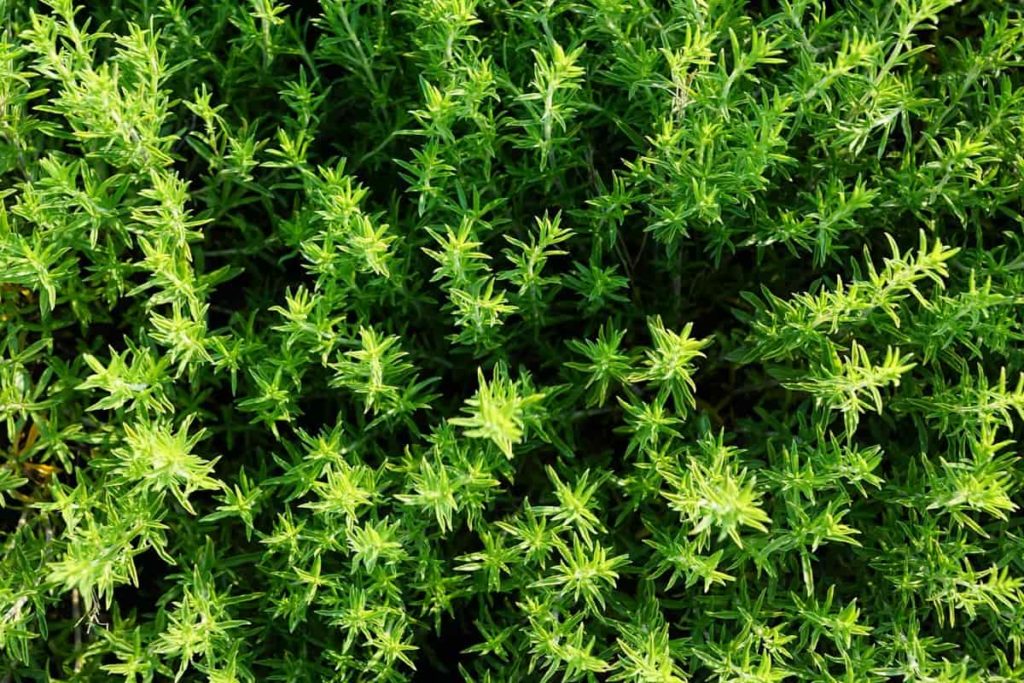
Take care of your herb plants
- Use only organic fertilizers, as they help plants grow at a healthy and low stressed rate. It is also a good idea to apply liquid seaweed or liquid fish emulsion as a foliar spray every week during the growing season. It can provide the right amount of nutrients needed to keep your plants healthy. Also, water your herb plants only when they need it. Try watering the plants once a day, preferably in the morning.
Tips for growing your herbs from seeds
- For growing herbs from seeds, look for new plant varieties that are dense and compact. Do not plant the seeds of most herbs more than 3 inches deep, or just sprinkle them on the soil and cover them loosely. Cover the container with a plastic dome or bag, and keep it in a warm place away from direct sunlight so that your seeds remain alert and comfortable until they germinate. Once you see your seeds begin to germinate in the soil, remove the plastic cover and move to a sunny spot. Then sit back, watch your herbs grow, and prepare your taste buds to enjoy.
- Growing herbs from seeds are no different than growing vegetables, with two major exceptions. Many herbs take longer to germinate and have a lower germination rate than vegetables. Patience is essential when growing herbs.
- For most herbs, a germination temperature of 21°C is ideal. If you keep your thermostat low, you should invest in a heat mat to get your seeds started. Also, the seeds of some herbs should not be covered with soil as they need light to germinate. You just need to press the seeds into the moist seed starting mix, then keep the seeds and soil moist frequently, and cover with a plastic lid, one piece at a time. Or plant cover measures using row cover, or think layer vermiculite cutting, care management is an important factor in this method to make production more efficient.
Tips to grow herbs using cuttings
- Care management for herb plants is an important factor to make the production more effective. Herbs are mainly grown using cuttings from any available source. Buy cuttings according to your needs or just get them from your friend’s garden.
- Once you have purchased your cutting, check its quality and its ability to grow further. Check if you have nodes on it which is the main factor to start the development. Now place the cutting inside a clean jar or any vessel with plenty of freshwaters. Cover 3/4 of the jar with water. If any, cut off the leaves so that they do not interfere with the new growth. This is because if the leaves rot in the jar due to water, they can ruin the setup.
- Now place the setup in any place where there is an adequate supply of sunlight. Direct sunlight is not recommended as they allow the cutting to dry and allows it to remain stable without overgrowth.
- Change the water daily and keep the setup the same for a few weeks. You will see the roots grow and when these roots grow it is time to transplant them into the soil.
- Take cuttings with newly prepared roots and apply them in soil water and other natural fertilizers to keep them healthy. And with that, the process is done. Now you are ready to harvest it after full development.
What kind of nutrients do herbs need?
- Start by planting herbs in healthy soil rich in organic matter. In addition, they will benefit from an organic, complete, slow-release fertilizer that contains equal amounts of macronutrients nitrogen, phosphorus, and potassium. If your garden has sandy soil, then gently releasing fertilizer is especially important as nutrients are depleted quickly. You can also apply fish emulsion, an organic fertilizer that is high in nitrogen, with an NPK ratio of 4-1-1 or 5-1-1, to give extra growth to fast-growing herbs that you harvest often an extra boost.
Tips for water requirement for herb farming
- All plants need regular watering, although some herbs require more water than others. Take the time to find out what each herb needs in terms of moisture. For example, basil prefers water more than lavender, which prefers completely dry soil between waterings, so do not mix these two herbs.
- It is important to know that most herb plants are to water about once a week. During extreme heat or drought conditions, sometimes twice a week will be required. In the cooler hours of the morning, between 6 and 10 am water the roots to prevent evaporation and to soak the roots.
In case if you miss this: How To Start Onion Farming, Questions, Answers
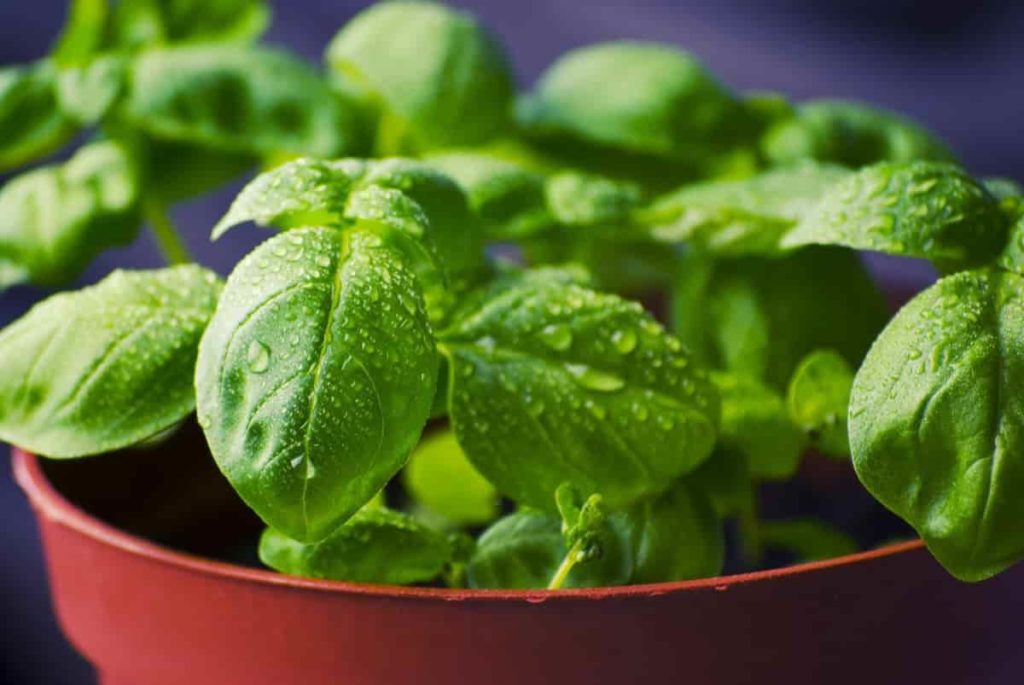
Tips for making more profits in herb farming
- Save more space and increase productivity by using advanced layout techniques to maximize profits by selling herbs. The new and modern layout that uses every inch of your land will double the normal production.
- Herbs that grow on walls and layered tubs are now at the forefront of increasing volume. Different types of herbs can be grown together and you can use them to serve a wide range of customers.
- Take special care to improve soil quality. Prepare the soil bed in such a way that the planted herb gets all the essential nutrients and the nutrients are spread all over the area. To achieve this, divide the soil into three layers. Layer 1 to any natural growth stimulator, layer 2 as soil, and layer 3 should be mixed with soil and fertilizer to stimulate any natural growth.
- Instead of selecting by choosing any one target crowd, you can focus on two or more businesses at a time. Say you have cut your herbs, and now you are ready to send it. You can use one part of it beneficially for decorative purposes, the other part for craftwork, the other can be left dry and sold as an herbal powder. Find out the different purposes of each herb and offer it to different types of consumers. By doing this you can eliminate the damage caused by low sales in a particular area.
Basic tips for starting an herb garden
- Drainage – Most herbs prefer moist, but very sunny soil. Too wet soil will not produce pleasant herbs.
- Not too much – Keep fertilizers easy to use when growing herbs. If too much fertilizer is used, the plants will produce large quantities of plants with low-quality flavors.
- Keep it manageable – If you are new to gardening, consider selecting 2 or 3 herbs to get started. Start with what you think you will use the most.
In case if you miss this: Precision Farming Tools – Guide For Beginners
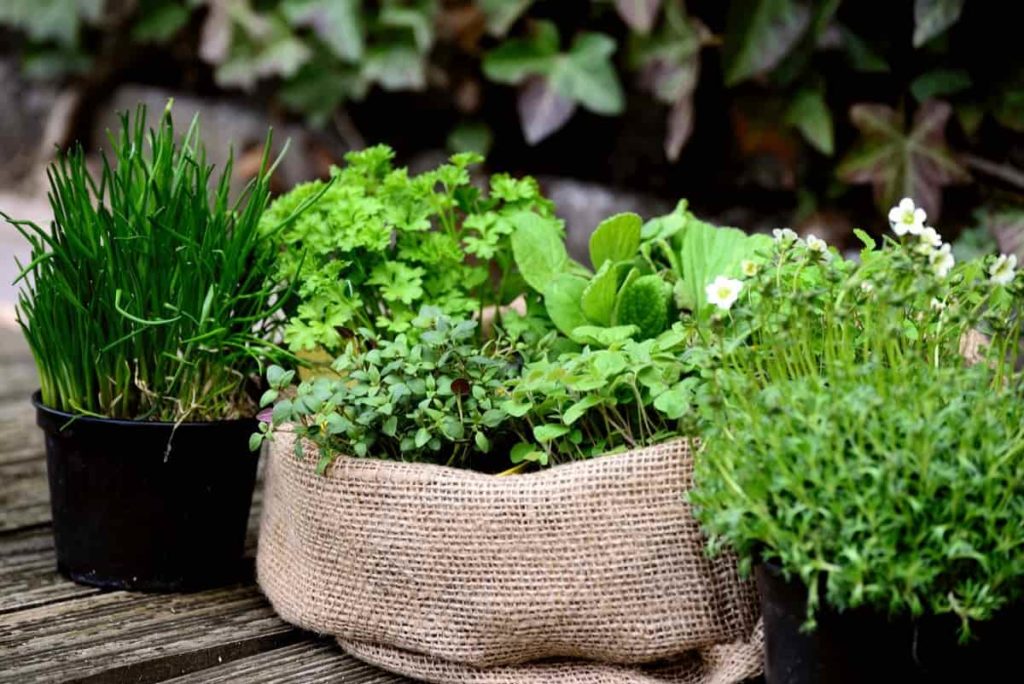
Tips for starting vertical herb farming
- In vertical herb farming, herbaceous crops are cultivated in stacked layers and vertically inclined surfaces. Herbs are beautiful plants, flexible in the kitchen, and easy to grow. A variety of herbs can be grown from seeds, starter plants, and even cuttings. The use of structures or column trees in vertical agriculture to create garden rooms or to identify hidden places that are ready to be explored. Many vertical farms have a greenhouse-like condition, which uses natural sunlight and mainly solar energy during the day. There are many vertical forms indoors using artificial light and temperature and humidity control. The first and foremost advantage of vertical agriculture is that it produces very high yields per available land or field.
- Here are some popular herbs for the vertical garden are Coriander, Parsley, Basil, Mint, Marjoram, Thyme, Rosemary, Nasturtium, Salvia, Lemongrass, Chives, Chili Pepper, Tarragon, Oregano, Vietnamese Mint, Fennel, Chervil, Dill, Lovage, Watercress, Wild Rocket, Stevia, and Ginger.
Tips for solving herb garden problems
- Main reasons for herbs dying – The main reason for herbs dying is root rot, which is caused by over-watering, slow-draining soil, and potting without drainage holes in the base. Herbs need well-drained soil and excess moisture around the roots causes the roots to rot, causing the herbs to turn yellow, fall off and die. Basil, Red Pepper, Parsley, and Mint also die after flowering so it is important to cut these herbs regularly to accelerate growth and promote a good supply of fresh leaves. To revive dying herbs, prune any diseased roots with sterile prongs for healthy growth and drain the herbs in a pot with fresh, well-drained fertilizer at the base with new, well-draining compost. Find the herb in partial sunshine when it is recovering and water well.
- Reasons for herb wilting – The most common cause of herb wilting is the stress of drought caused by planting in small pots which reduces soil capacity and therefore reduces moisture. Small pots heat up quickly in the sun, which dries out the soil and causes herbs to wither as a sign of stress. Herbs such as Coriander, Lentils, Basil, and Wild rockets can bolt quickly, especially in overcrowded or dry soils. Sow regularly to ensure a good supply of these crops.
- Maintain air circulation and ventilate greenhouses to help reduce fungal diseases such as gray mold and damping-off of seedlings. For growing Lettuce plants, downy mildew disease can be problematic and Mint rust can affect Marjoram and Savory as well as mint varieties. Rosemary beetle can be a problem with Lavender, Sage, and Thyme, as well as Rosemary. Carefully protect young plants from birds, slugs, and snails.
Tips for harvesting herbs
- Start harvesting herbs when there is enough foliage to sustain the plant’s growth. Harvest early in the morning. Prune herbs before flowering, otherwise leaf production is reduced. Herbs should be harvested before flowering. Each herb has a different flowering time during the season. The best time to harvest herbs is in the morning as oil and moisture in the leaves are best at this time. The leaves on the top of the herb will be the tastiest. Herbs grown for their leaves should be harvested at the time of flower bud development and half opening.
- Types of Pesticides Used in Agriculture: A Beginner’s Guide
- Economical Aquaculture: A Guide to Low-Budget Fish Farming
- 15 Common Planting Errors That Can Doom Your Fruit Trees
- How to Make Houseplants Bushy: Effective Tips and Ideas
- Innovative Strategies for Boosting Coconut Pollination and Yield
- Pollination Strategies for Maximum Pumpkin Yield
- The Complete Guide to Chicken Fattening: Strategies for Maximum Growth
- Natural Solutions for Tulip Problems: 100% Effective Remedies for Leaf and Bulb-Related Issues
- Revolutionizing Citrus Preservation: Towards a Healthier, Greener Future
- Natural Solutions for Peony Leaf and Flower Problems: 100% Effective Remedies
- Maximizing Profits with Avocado Contract Farming in India: A Comprehensive Guide
- Natural Solutions for Hydrangea Problems: 100% Effective Remedies for Leaf and Flowers
- The Ultimate Guide to Choosing the Perfect Foliage Friend: Bringing Life Indoors
- From Sunlight to Sustainability: 15 Ways to Use Solar Technology in Agriculture
- The Ultimate Guide to Dong Tao Chicken: Exploring from History to Raising
- The Eco-Friendly Makeover: How to Convert Your Unused Swimming Pool into a Fish Pond
- Mastering the Art of Delaware Chicken Farming: Essentials for Healthy Backyard Flocks
- 20 Best Homemade Fertilizers for Money Plant: DIY Recipes and Application Methods
- How to Craft a Comprehensive Free-Range Chicken Farming Business Plan
- Brighten Your Flock: Raising Easter Egger Chickens for Beauty and Bounty
- How to Optimize Your Poultry Egg Farm Business Plan with These Strategies
- Subsidy for Spirulina Cultivation: How Indian Government Schemes Encouraging Spirulina Farmers
- Ultimate Guide to Raising Dominique Chickens: Breeding, Feeding, Egg-Production, and Care
- Mastering the Art of Raising Jersey Giant Chickens: Care, Feeding, and More
- Ultimate Guide to Raising Legbar Chickens: Breeding, Farming Practices, Diet, Egg-Production
- How to Raise Welsummer Chickens: A Comprehensive Guide for Beginners
- How to Protect Indoor Plants in Winter: A Comprehensive Guide
- Ultimate Guide to Grow Bag Gardening: Tips, Tricks, and Planting Ideas for Urban Gardeners
- Guide to Lotus Cultivation: How to Propagate, Plant, Grow, Care, Cost, and Profit
- Agriculture Drone Subsidy Scheme: Government Kisan Subsidy, License, and How to Apply Online
- Ultimate Guide to Raising Araucana Chickens: Breed Profile, Farming Economics, Diet, and Care
- Bringing Hydroponics to Classroom: Importance, Benefits of Learning for School Students
- Ultimate Guide to Raising Polish Chickens: Breed Profile, Farming Economics, Diet, and Care
- Ultimate Guide to Raising Australorp Chickens: Profile, Farming Economics, Egg Production, Diet, and Care
- Silkie Chicken Farming: Raising Practices, Varieties, Egg Production, Diet, and Care
- Sussex Chicken Farming: Raising Practices, Varieties, Egg Production, Diet and Care
The site has really helped since it gives information in detail and we’ll explained